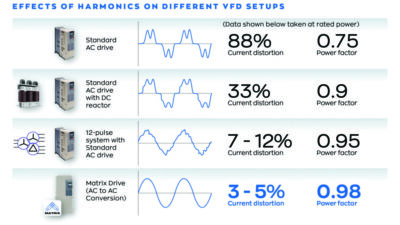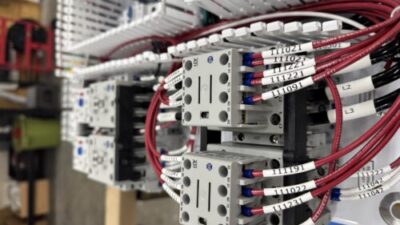Troubleshooting geographically large electrical control systems with a multimeter in hand can be very time consuming and, unless viewed as an exercise perk, very tiring as well. This is where systems with self-diagnostic capabilities can be useful. As a designer of very large mobile structures, such as aircraft maintenance docking systems and retractable stadium roof transporters, Uni-Systems L...
Troubleshooting geographically large electrical control systems with a multimeter in hand can be very time consuming and, unless viewed as an exercise perk, very tiring as well. This is where systems with self-diagnostic capabilities can be useful.
As a designer of very large mobile structures, such as aircraft maintenance docking systems and retractable stadium roof transporters, Uni-Systems LLC specializes in control systems with built-in diagnostics. The company employs PLCs and remote I/O systems, such as GE Fanuc’s 90-30 and 90-70 PLCs and its Genius remote I/O blocks and Genius-enabled variable frequency drives (VFDs).
Communicating via Genius bus, these I/O modules transmit, not only their state and values, but also send any errors back to the PLC. These errors can be internal, such as burned out I/O points or firmware errors, or external circuit or component faults.
How can an input point know what faults a connected circuit may have? It should normally have a high or low potential, and it should not know if a connected, normally open limit switch is shorted or merely closed. Instead of functioning as a standard discrete input, and merely regarding a signal as high or low, these I/O modules look for four different signal levels. Below 25% the circuit is “open,” between 25 and 50% the circuit is “off,” between 50 and 75% it is “on,” and if the circuit is above 75% it is shorted (see figure).
So, the I/O block can differentiate these values, but how does the circuit provide them? All dry contacts, such as limit switches, must be fitted with two resistors: one in series and one in parallel with the contact. With the contact open, the input will see both resistors in series. With the contact closed, it will see only the series resistor. With the wires shorted prior to the switch/resistors, it will see a short. And, with the wires cut, it will sense no circuit. Output points are different, of course, but they work on the same principles, and can detect open circuit and overload/short conditions.
For solid-state devices, such as proximity switches, the resistors can generally be omitted. This is possible because the normal function of a two-wire style prox relies on a trickle current to keep it powered, so the same states described above can be sensed in a proximity switch.
Since our retractable roof application makes extensive use of plug connections to facilitate fast replacement, there is always the chance of connections being left unplugged. However, the roof’s diagnostic system will report this to the PLC.
In addition, a dragging brake will always cause problems. To prevent this from happening, each brake coil is tested through the above diagnostic, and then equipped with a switch that opens with the brake disk. This allows a startup to be safely aborted before the VFDs reach a significant frequency if a brake fails to open. This makes it vital for the system to be able to detect a switch failure.
For more information, visit www.uni-systems.com .
Input
External Impedance
Internal Impedance
Signal Voltage
Circuit Condition
27
25.9k Ohm
11.9k Ohm
37.7V
Normal, Open
28
3.9k Ohm
11.9k Ohm
90.4V
Normal, Closed
29
Infinite
11.9k Ohm
0V
Disconnected
30
0 Ohm
11.9k Ohm
120V
Shorted
Author Information
Lennart Nielsen is senior electrical engineer at Uni-Systems LLC , Minneapolis, MN.



